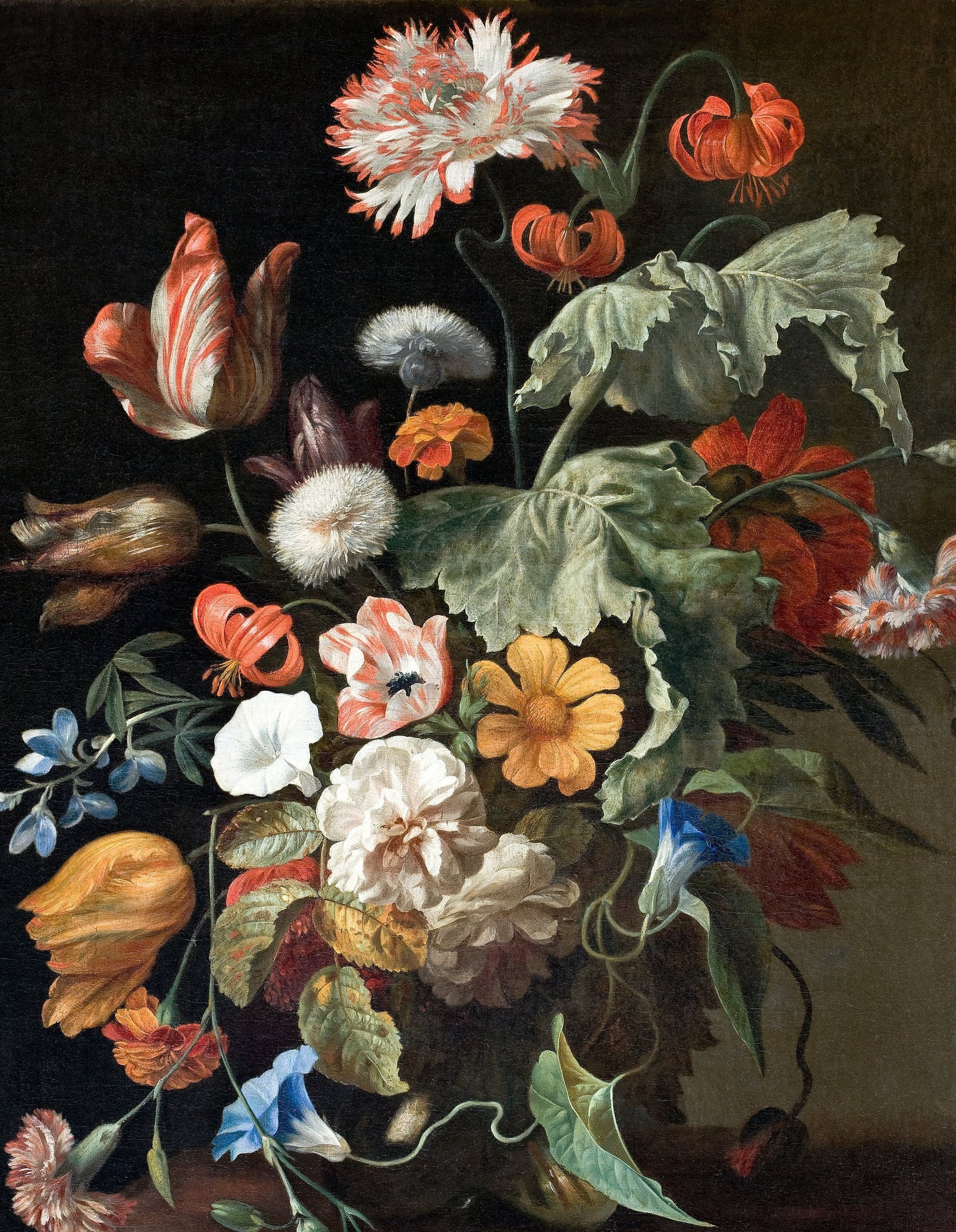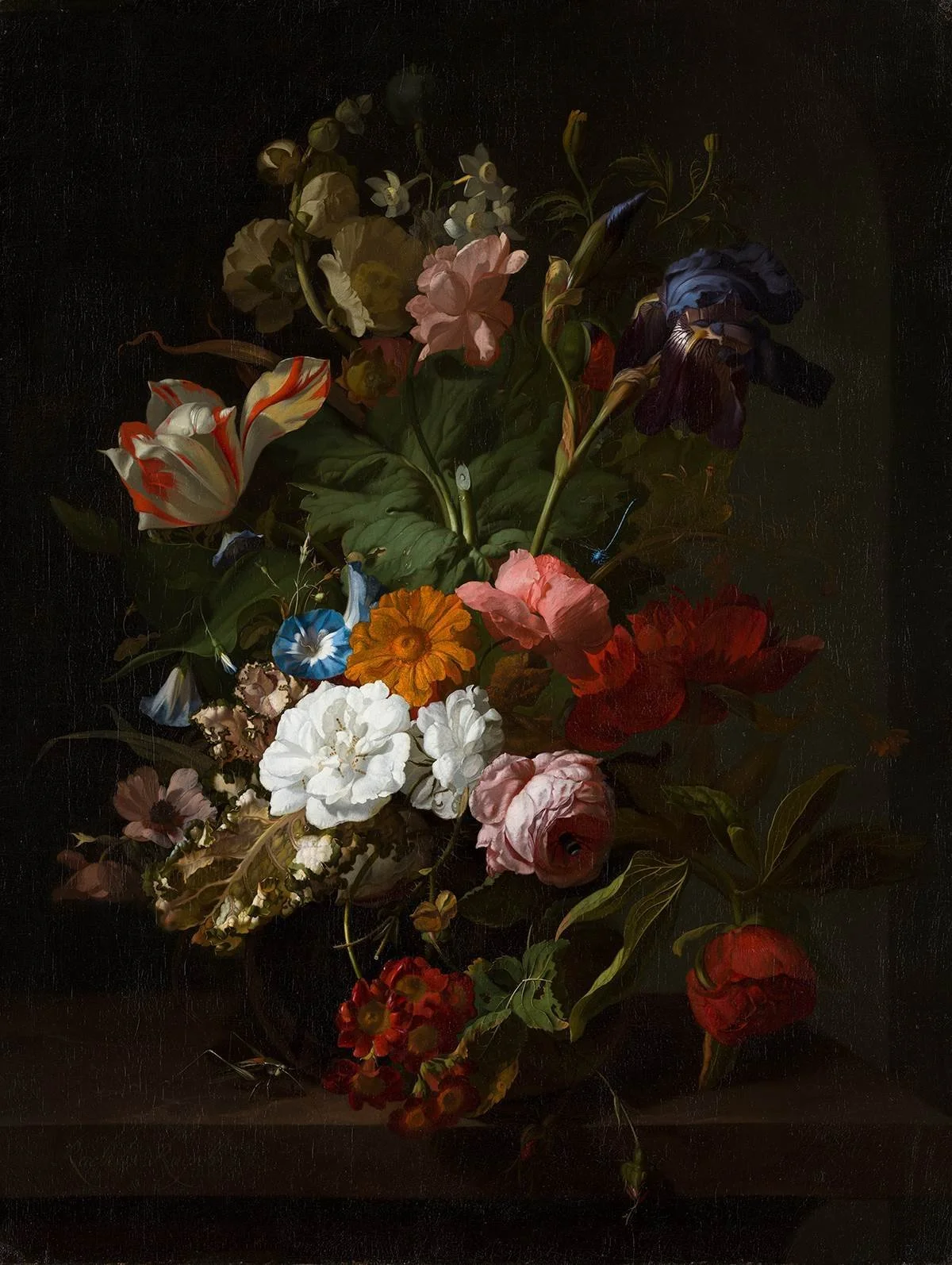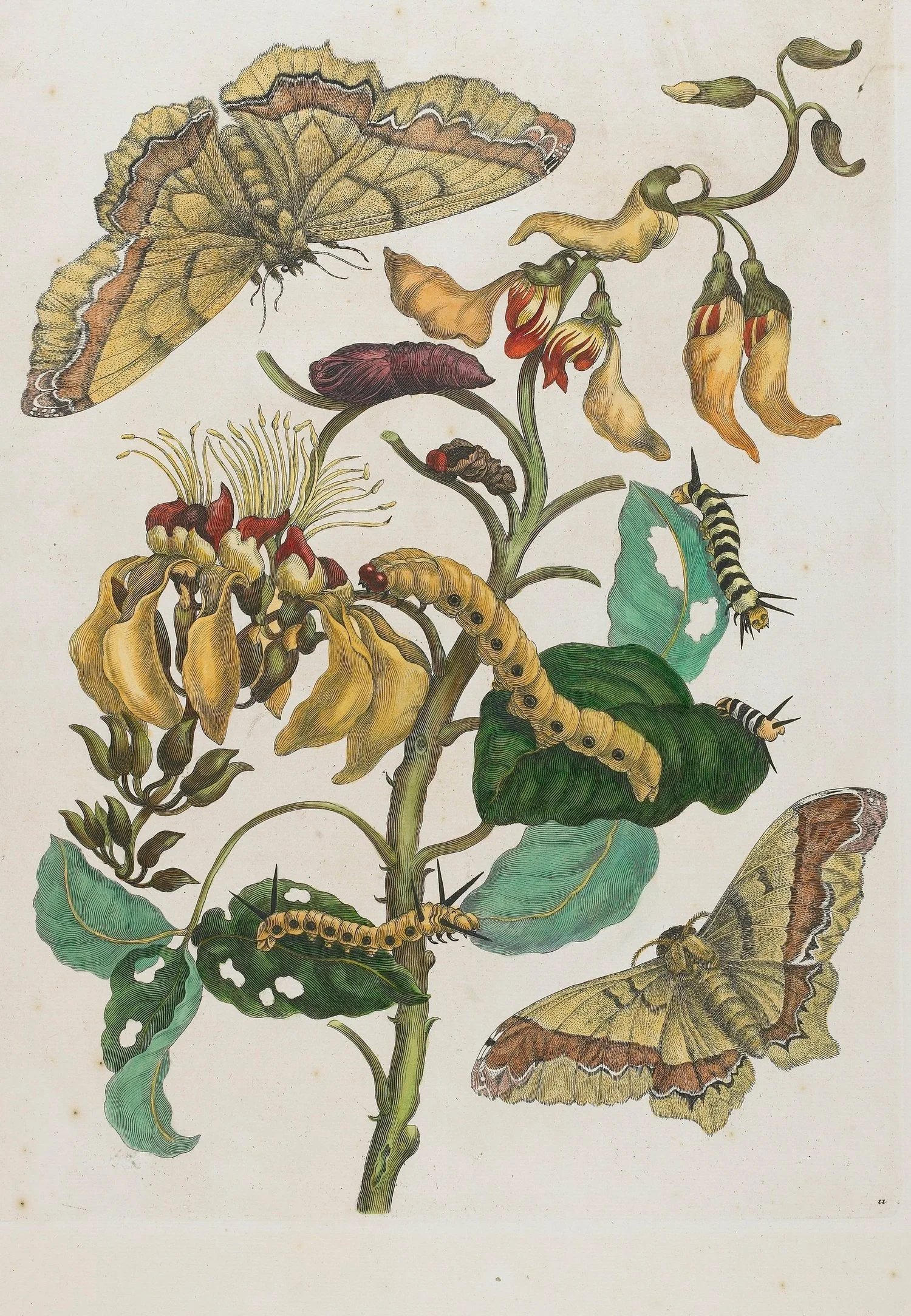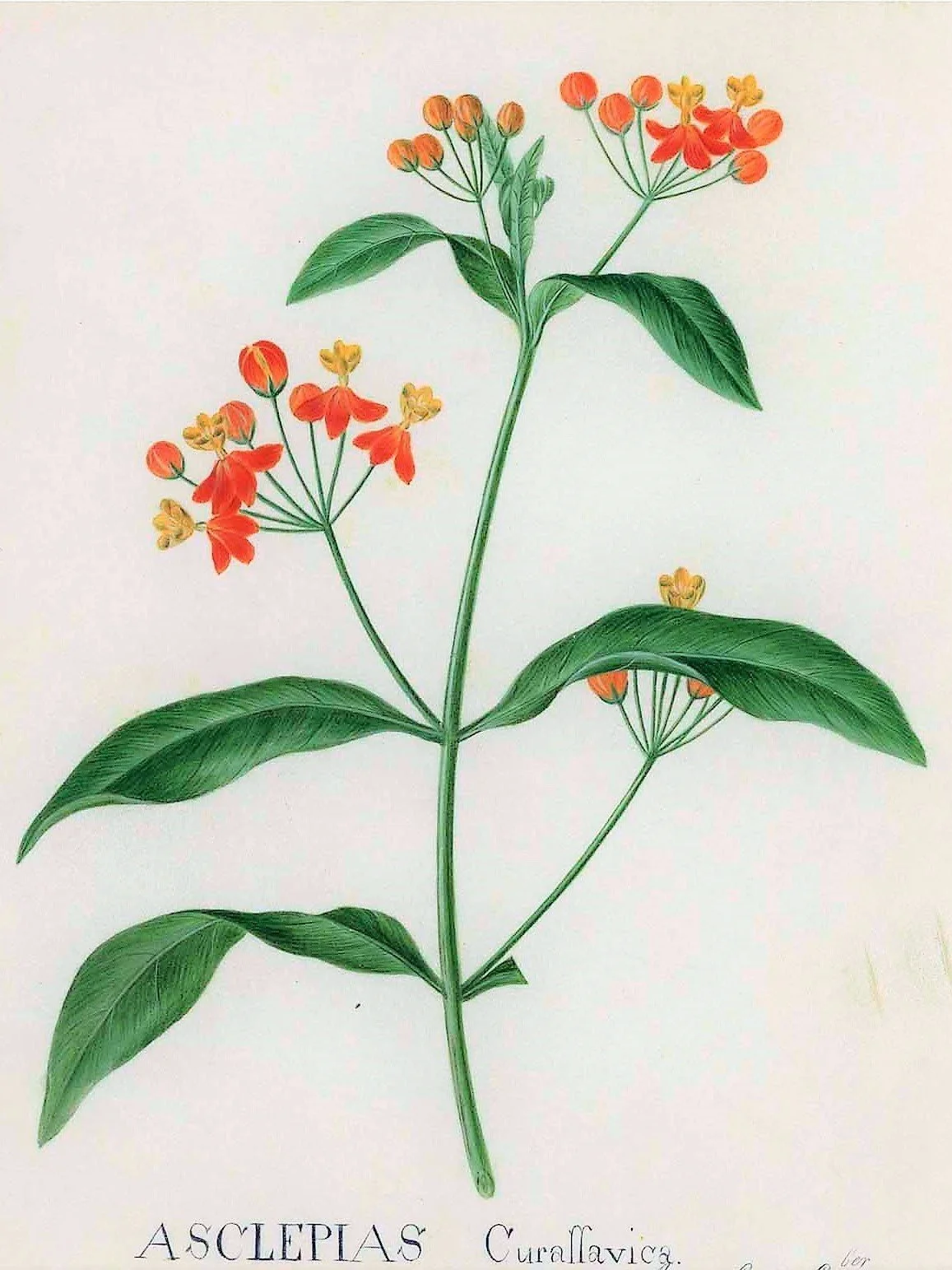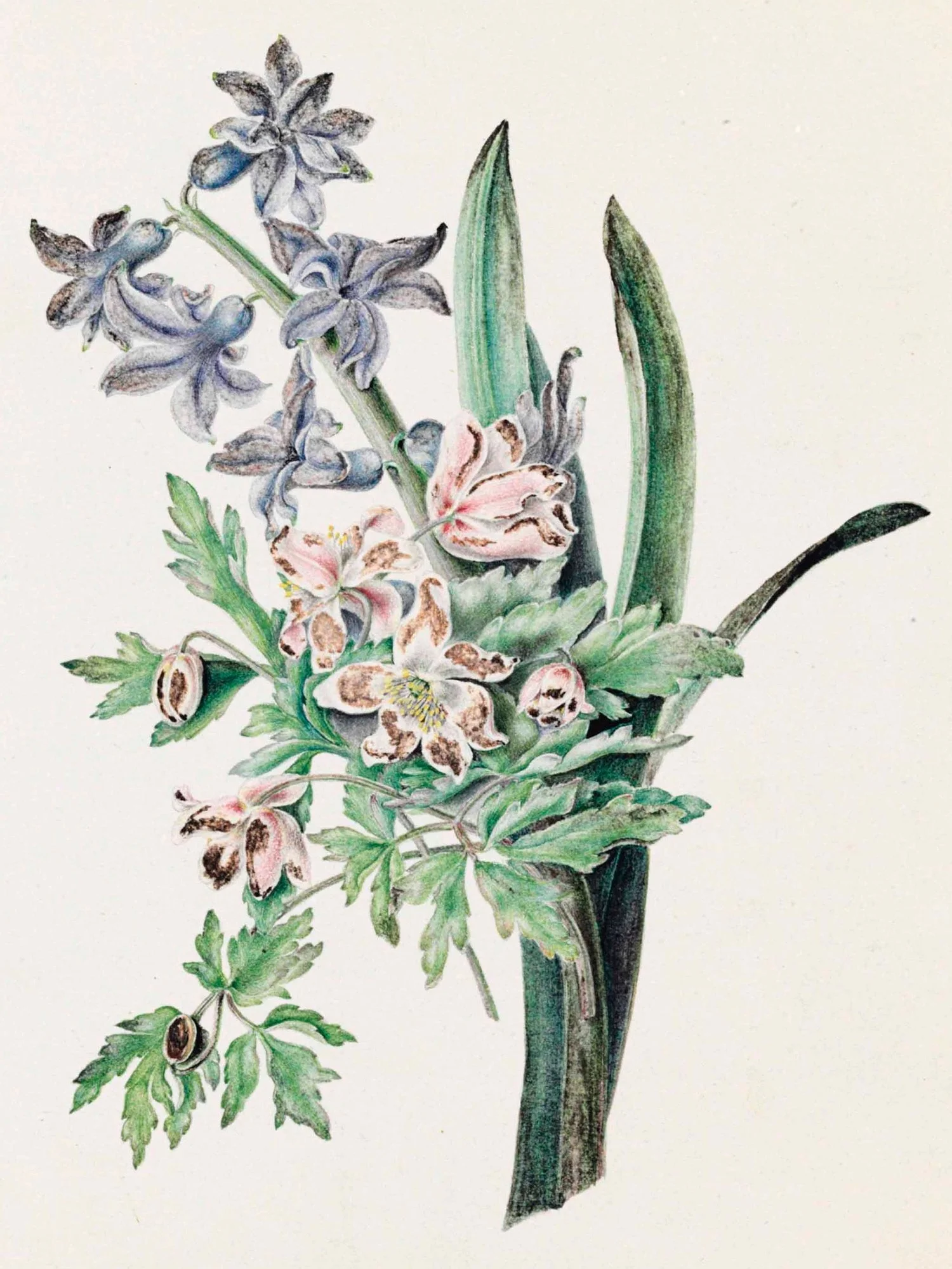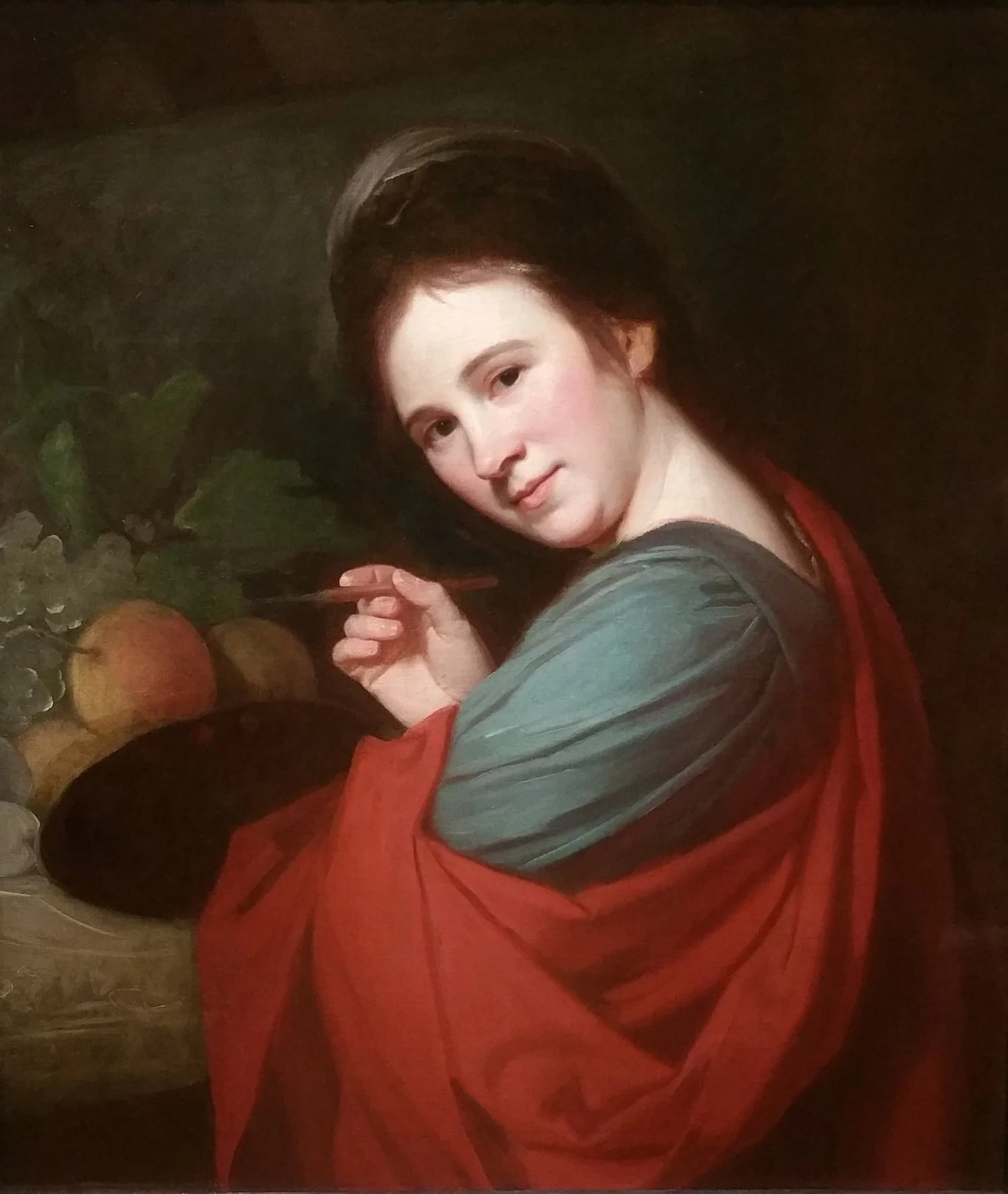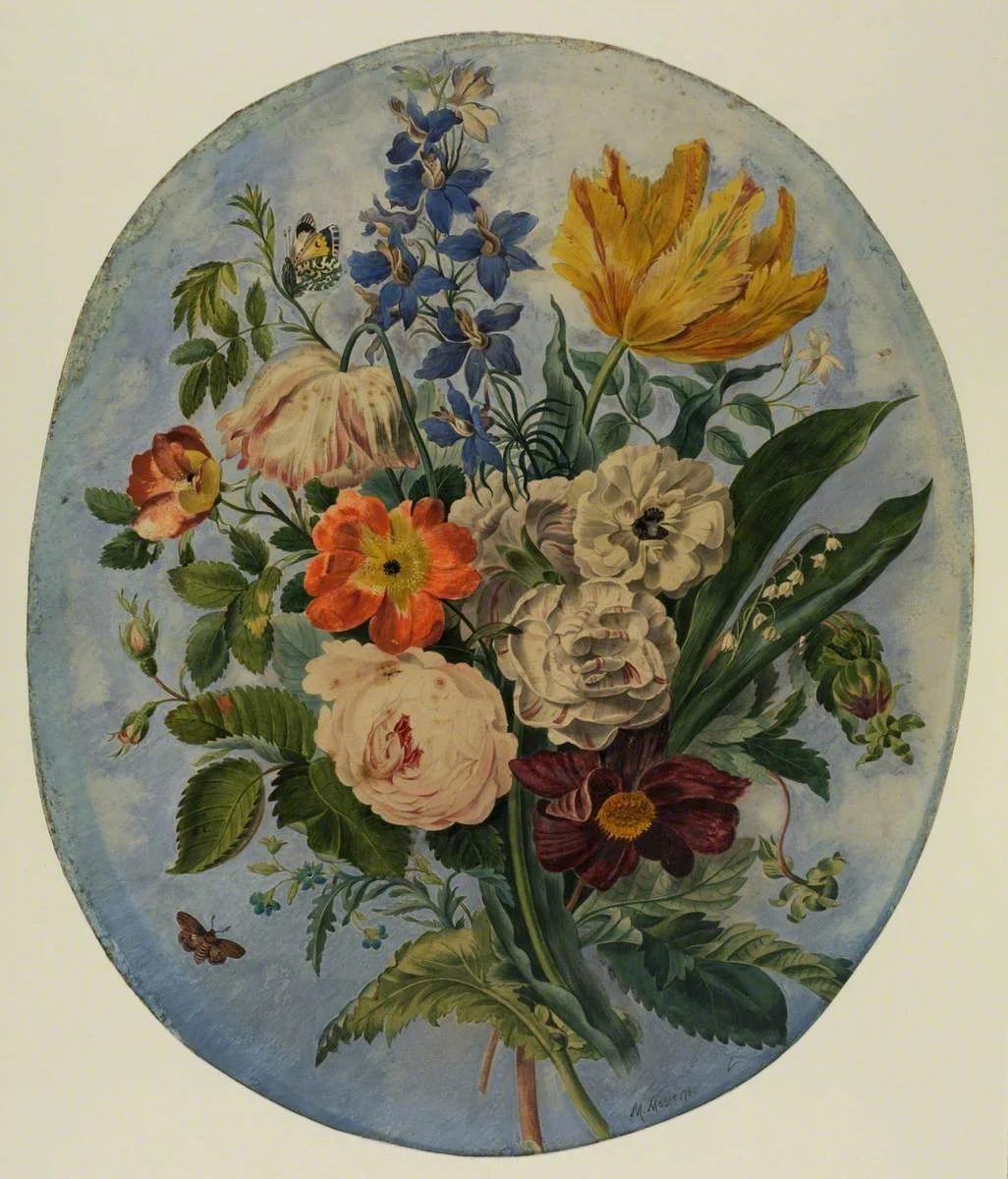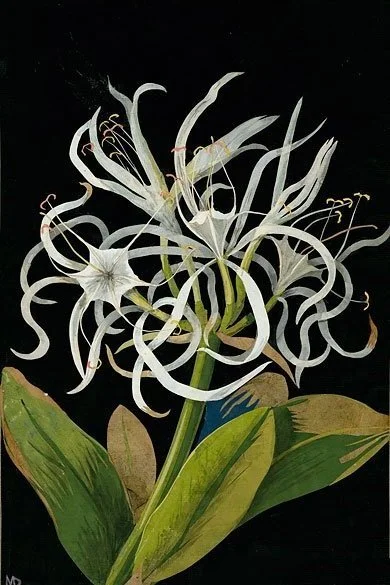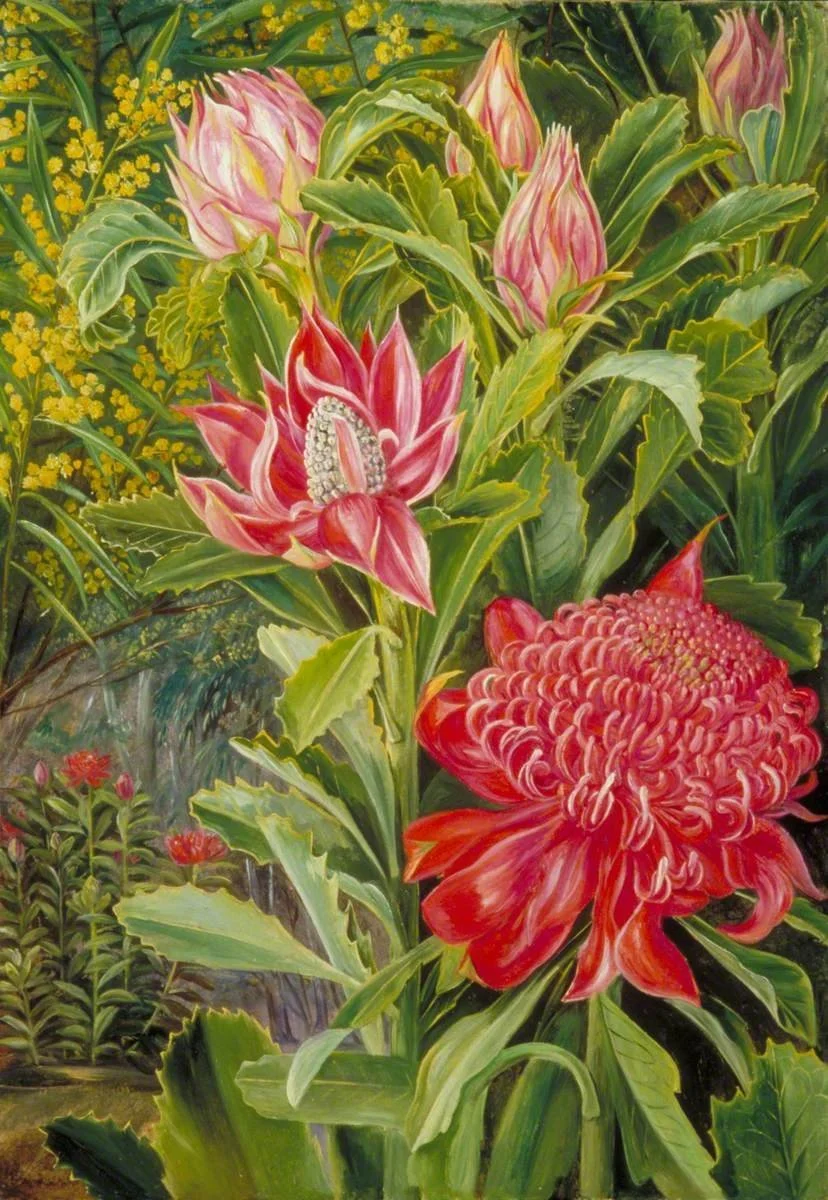Outgrowing: Female Artists and Flowers
by Jane Simpkiss
Rachel Ruysch, Detail of Still Life with Flowers, 1750s, oil on canvas, 75 x 58.5 cm, Hallwyl Museum, Stockholm (Image: Wikipedia)
Throughout history, flowers have been considered a suitable subject on which women can focus their attention. Delicate, natural, beautiful; flowers embody the qualities which have historically been seen as feminine virtues and thus the cultivation, study and depiction of this subject was permitted by a patriarchal society which prohibited women from so many other pursuits in life.
This was particularly the case for female artists and illustrators in Western Europe. Denied access to formal arts education or training, female artists were often unable to learn the skills necessary to render the human body accurately. Such study was considered unseemly for women and unnecessary for someone whose main role was a domestic one. Furthermore, many considered women to be without the imaginative capacity to produce the highest form of art – the history painting. Society did, however, concede that women had a natural aptitude for decoration. Whilst other subjects were considered of little value for women, the study of flowers could hone a woman’s capacity for decoration and design, which could only be an asset on the marriage market. This subject ticked a number of other boxes as well: it could be studied in the home, required limited resources, and avoided the problem of meeting those outside a woman’s household.
Whilst these limitations curbed the artistic output of many women, it did not stop a number of female artists from achieving both professional and financial success. It should be noted that the majority of female artists that were able to practice their craft were those that had the leisure time and financial security to do so, mostly from the middle and upper classes. Furthermore, before art schools began to accept female students in the mid-nineteenth century, most of the women who became successful in their field had fathers or relatives who were in some way connected to the arts. Despite this, women were not just passive recipients of this knowledge but made serious artistic and scientific developments of their own in the field.
Rachel Ruysch, Vase with Flowers, 1700, oil on canvas, 79.5 x 60.2 cm, Mauritshuis, The Hague (Image: Wikipedia)
Maria Sibylla Merian, Caterpillars, Butterflies (Arsenura armida) and Flower (Pallisaden Boom: Erythrina fusca), Plate 11 from Metamorphosis Insectorum Surinamensium, first published 1705, hand-colored etching and engraving, 38.1 x 28.2 cm (Image: Wikipedia)
The rich and competitive art market of seventeenth-century Netherlands allowed for subject specialisms within painting to thrive, with floral paintings proving some of the most popular. Artists like Rachel Ruysch not only succeeded as professional artists but thrived through their depiction of flowers. Ruysch’s father was a physician, anatomist and botanist. His private museum containing natural history specimens was the perfect place for Ruysch to perfect her art, allowing her to produce lifelike arrangements from embalmed and living flowers. Despite being married with ten children, she gained great financial success through her work, earning more from a single canvas than contemporaries like Rembrandt.
The German entomologist and artist Maria Sibylla Merian also lived in the Netherlands for part of her life and gained access to arts education through her step-father, the flower painted Jacob Marrel. Whilst most sciences, specifically anatomy, were out of bounds to women, botany and entomology were permissible pursuits. Merian taught floral painting to female students and produced The New Book of Flowers, which was sold through her husband’s studio and offered inspiration for her students when drawing or sewing. Merian scientific passion led her to break with social customs. After divorcing her husband, Merian travelled to Dutch Suriname accompanied only by her daughter at the age of 52 to illustrate the metamorphosis of the native insects and the plants on which they lived.
Ann Lee, Botanical studies of Asclepias Curallavics, 21 August 1771 (Image: Wikipedia)
Margaret Meen, watercolour in an album of drawings and watercolours on paper and vellum (Image: Christie’s)
Across the channel in Britain, art and botany came together as a viable outlet for the creative talent of female artists like Ann Lee and Margaret Meen. Lee was the daughter of nurseryman James Lee and through him gained tuition in painting flowers in watercolour from Sydney Parkinson who worked at Kew Gardens, where Lee’s work is now held. Meen was similarly connected to Kew Gardens, beginning the serial publication Exotic Plants from the Royal Gardens at Kew, which alas led to the production of only two volumes of beautifully panted plates. Queen Charlotte, wife of George III, was a passionate lover of gardens and plants and appears to have employed Meen to teach her drawing.
Meen’s achievements run parallel with the more well-known, although still under-recognised, artist Mary Moser, who was also employed by the Queen to produce a number of floral canvasses for Frogmore Cottage in Windsor, as well as drawing lessons. The Queen’s interest gave these female artists rare professional opportunities, creating a space for them to work professionally and yet still within the bounds of propriety. Both Meen and Moser exhibited at the newly founded Royal Academy of Arts, London, although only Moser was asked to be a founding member (one of only two, alongside Angelica Kauffman). Moser worked in both oils and watercolour, the former a far more unusual medium for women due to the ‘messiness’ it was considered to involve. Whilst she exhibited landscapes and portraits, she is best known for her flowers, perhaps due to the inherent gender bias within art history. Whilst floral subjects and still life were considered a lesser subject within the hierarchy of painting genres, the consumption of the decorative arts, gardening, natural history and science were important aspects of eighteenth-century British culture. Moser’s significance should therefore not be undervalued.
George Romney, Mary Moser, c. 1770-71, oil on canvas, 76.3 x 64.2 cm, National Portrait Gallery, London (Image: Wikipedia)
Mary Moser, Bouquet of Flowers, 1780, watercolour on paper (© Samuel Courtuald Trust)
Whilst many female artists worked within traditional media, others developed their own. Mary Delany, when noticing the similarity between a red geranium and a piece of red paper on her bedside table, started her first ‘paper mosaick’, a form of paper collage. Delany went on to make 985 exquisitely detailed works, something made even more impressive by the fact that she was aged 72 when she began this pursuit. The accuracy of Delany’s work was commented upon by noted botanist Joseph Banks, who sent her flowers from Kew Gardens to imitate. It is interesting to consider the close relationship that existed between art and science in many of these instances. The increased tendency to view these fields separately may have caused us to overlook the significance of female botanical illustrators within the wider study of female artists.
Mary Delany, Pancratium maritimum, 1775, paper collage, British Museum, London (Image: Wikipedia)
Whilst Delany had undertaken other artistic pursuits previously, it is interesting that this most impressive achievement was done during her second widowhood, a socially appropriate time for a woman to develop her interests. Despite her considerable talent, Delany, like many women, had no wish to display her works beyond her immediate social circle and risk breaching the parameters of respectability.
During the eighteenth and nineteenth centuries, the popularity for botany and botanical art grew enormously as affordable books on the subject were published, often specifically aimed at a female audience. The Victorian passion for plants and the rise in botanical publications offered opportunities for artists such as Sarah Anne Drake, who contributed 1,100 studies for The Botanical Register and illustrated one of the largest botanical books ever produced, Bateman’s Orchidaceae of Mexico and Guatemala. Artists like Marianne North continued to break societal restrictions faced by women by undertaking numerous journeys around the globe to depict flora, often travelling alone (the Marianne North Gallery at Kew Gardens, London, is the only permanent solo exhibition by a female artist in Britain).
Sarah Ann Drake, Double Red Azalea India (Rhododendron hort. cv. double red), 1842 (Image: Wikipedia)
Marianne North, Flowers of the Waratah, of New South Wales, early 1880s, oil on board, 50.9 x 35.2 cm (©The Board of Trustees of the Royal Botanic Gardens, Kew)
The achievements of these women have sadly often been neglected within the canon of art history. The lives, interests and inspirations of many female artists has not been recorded, due to lack of interest from male critics and the societal expectation for women to hide their achievements. Most female artists also undertook domestic duties, which sometimes took them away from their art practice permanently; of Sarah Anne Drake, for instance, almost nothing is known after her marriage. Certainly, the belief in the ‘decorative’ nature of much of the work of female artists has contributed to a lack of awareness of their contributions. This is particularly the case with art forms seen as being beyond the traditional ‘fine art’ canon and examples of ‘women’s work’: tapestry, embroidery, and shell work were all valued far below oil painting or sculpture.
Approaching the work of female artists through their relationship to flowers allows us to understand more about the experiences of female artists, whose lives and artistic inspiration can so often be lost, allowing their stories to bloom once more.
Detail of Embroidered panel, c.1770 (© Leamington Spa Art Gallery & Museum)
Jane Simpkiss is the curator of the exhibition Outgrowing: Flowers and Female Artists, 1700-Now now on at Leamington Spa Art Gallery & Museum until the 24th April 2022.
March 2022
